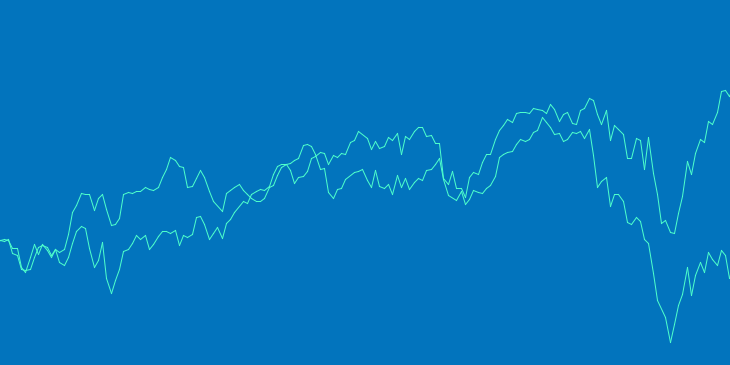Volatility subsided in October from the high levels seen in August and September and many stock markets went on to post their best month in over 4 years. Canadians went to the polls and selected the first new federal government in almost 10 years, the financial implications of which won’t be felt until sometime next year.
October 2015 Market Performance
All index returns are total return (includes reinvestment of dividends) and are in Canadian Dollars unless noted.
| Other Market Data | Month-end Value | Return for October |
2015 YTD Return |
| Oil Price (USD) | $46.59 | +3.33% | -12.54% |
| Gold Price (USD) | $1,141.40 | +2.35% | -3.61% |
| US 3 month T-bill | +0.08% | +0.08%* | +0.04%* |
| US 10 year Bond | +2.16% | +0.10%* | -0.01%* |
| USD/CAD FX rate | 1.3075 | -2.02% | +12.71% |
| EUR/CAD FX rate | 1.4377 | -3.60% | +2.41% |
| CBOE Volatility Index (VIX) | 15.07 | -38.42% | -21.51% |
*Absolute change in yield, not the return from holding the security.
Most stock markets had a strong month in October, with many posting their strongest monthly performance in 4 years, or more. The developed markets as measured by the MSCI EAFE Index were up 7.8%, their best monthly performance in over 6 years. The S&P/TSX Composite Index though positive, did not have as strong performance as the other stock markets around the world.
This strong performance means that most stock markets are once again positive for 2015, except again in Canada.
Given the strong performance on the stock markets, you would expect bond markets to post losses, and October was no exception. In Canada most bond indexes were flat to slightly negative; the broad FTSE/TMX Universe Bond Index was down -0.3%. Outside of Canada bonds generally performed better. Lower grade US bonds performed well as did global high yield and emerging market bonds.
Major commodities such as oil and gold were positive in October, which were up +3.3% and +2.3%, respectively. This positive performance was not enough to turn the broad Bloomberg Commodity Index positive for the month and it was down -0.4%.
The Canadian Dollar strengthened in October and was briefly above 1.30 to a US Dollar, before finishing at 1.3075. Compared to the Euro, the Canadian Dollar was also stronger, finishing the month at 1.4377 to a Euro, compared to 1.49 a month earlier.
Market Commentary
October was a fairly quiet month for investors. The high levels of volatility from previous months reversed in October as most stock market indexes posted gains. With no major market-moving headlines, investors returned to focusing on market and company fundamentals. With the earlier losses in Canada and elsewhere it was apparent that many markets are now cheap compared to their historical averages, with the exception of the US.
The change in the Canadian federal government is expected to impact your finances starting next year. If you made between $44,701 and $89,401 in 2015, expect to pay less income tax in 2016 as the tax rate on that bracket is expected to drop from 22% to 20.5%. That means that if you make $75,000, you will pay $454 less in tax. If you make more than $200,000, expect to pay a little more as a new tax bracket is expected to be introduced where you would pay 4% more (33% instead of 29%) on any income earned in excess of $200,000.
But one of the biggest announcements from the Prime Minister-elect during the campaign was that if elected the federal government would run deficits for the next few years as they ramp-up spending to invest and get the economy growing again. Both the Conservatives, and surprisingly the NDP, campaigned on balanced budgets. Given that Canada’s cities continue to grow with little to no planning for public transit, the investment by the new government is good news for commuters.
With interest rates at historic lows, now is the time to borrow money to invest in infrastructure for the future.
October Economic Indicator Recap
Below are the current readings on the major economic indicators: central bank interest rates, inflation, GDP and unemployment.
Below are the current readings on a few other often followed economic indicators: retail sales and housing market metrics.
A Closer Look at the Canadian Economy
Canada’s unemployment rate continues to rise, climbing in September to 7.1% from 7.0% in August. 61,900 full time jobs were lost, the largest monthly decline since 2011. 74,000 part time jobs were added.
New housing starts continued to rise, hitting 230,700 in September, and came close to the near-term peak in 2012. Building permit activity in August was down slightly, while housing prices rose 0.3% for the month.
After a few months of positive inflation, Canada posted deflation of -0.2% in September. On a year over year comparison, inflation was +1.0% as of September. Core inflation which excludes more variable items such as gasoline, natural gas, fruit & vegetables, and mortgage interest was steady at 2.1%. Retail sales in August rose 0.5%, and were up 2.8% over the past 12 months.
The August GDP report was positive, but barely, for the third month in a row. The reading for August was +0.1%, slipping from +0.3% in July. At the Bank of Canada’s October meeting they left the benchmark interest rate unchanged at 0.50% and lowered their GDP forecasts for 2016 and 2017 to 2.0% and 2.5%, respectively. The economists at the big banks also pushed back their expectations for interest rate increases, and reduced their GDP forecasts. The average of the banks’ growth projections for 2016 declined from 2.25% in March to 2.0% as of September.
*Sources: MSCI, FTSE, Morningstar Direct, Trading Economics
